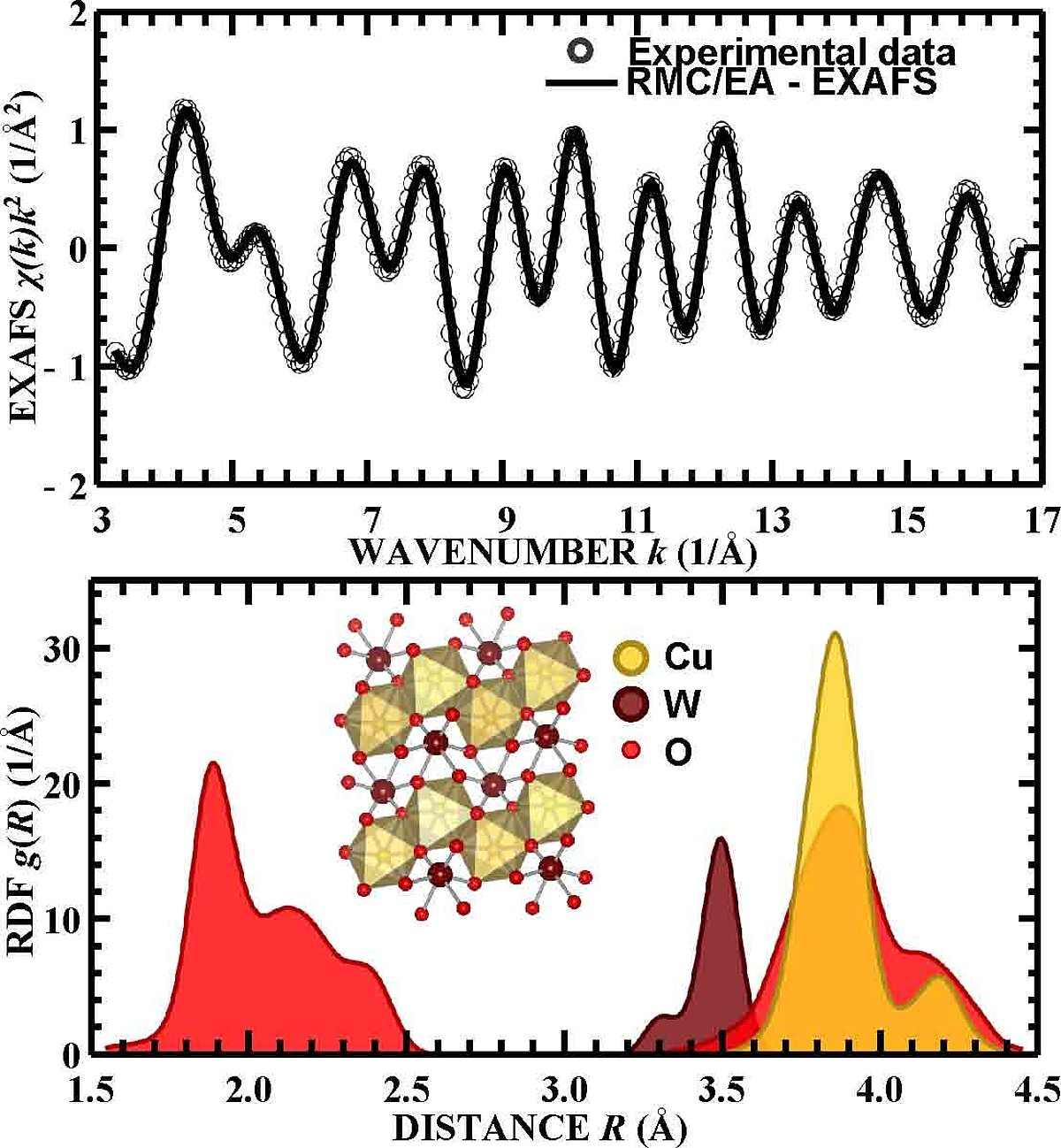
Reverse Monte Carlo (RMC) method is a numerical approach that allows one to determine a 3D model of material structure by minimizing the difference between calculated and experimental structure-structure related properties [1].
In the present thesis we develop a novel RMC-based scheme to probe the local structural and thermal disorder in crystalline materials by analyzing X-ray absorption spectra [2,3]. The proposed method allows one to analyze many atom distribution functions and thus to obtain not only the distribution of interatomic distances, but also the information on bonding angles, anisotropy of atomic displacements, correlations in atomic motion and effective bond strengths. The proposed approach is applied (i) to study hydrogen intercalation into lattice of rhenium trioxide, (ii) to analyze the anisotropy of atomic oscillations in wurtzite type zinc oxide and (iii) to reconstruct 3D structure of nanosized transition metal tungstates (CoWO4 and CuWO4).
2. J.Timoshenko, A. Kuzmin, J. Purans, Comp. Phys. Commun. 183, 1237 (2012);
3. J. Timoshenko, A. Kuzmin, J. Purans, J. Phys.: Condens. Matter 26, 055401 (2014).
References:
1. R.L. McGreevy and L. Pusztai. Mol. Simul 1, 6 (1988).2. J.Timoshenko, A. Kuzmin, J. Purans, Comp. Phys. Commun. 183, 1237 (2012);
3. J. Timoshenko, A. Kuzmin, J. Purans, J. Phys.: Condens. Matter 26, 055401 (2014).